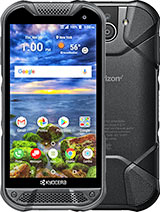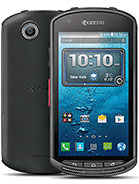You Use This Everyday But It Holds Secrets from You By BRIGHT SIDE
Living in a modern age, we’re constantly surrounded by all sorts of tech. We’re so used to it, that we don’t even notice how ingeniously designed it really is. And there a lot of small mysteries: Why does a keyboard have legs? How does my phone vibrate? Why doesn’t this USB plug ever fit on the first try? Today, you’ll have all the answers! 1) Ferrite beads No obscure tech shenanigans here, don’t be scared. There might just be one ferrite bead around you right now. If you’re in front of a laptop, just look at the end of its power cable, near the plug. There it is - that big cylindrical lump of black plastic.
Ever wondered what it’s good for? Well, any cable, like one that provides power to your laptop, is, in fact, sort of an antenna in nature – it has all the similar parts, so it can show all the similar properties and even receive random signals from time to time. This produces a lot of electromagnetic noise, which isn’t any good for your computer. The ferrite bead acts as a signal suppressor, also known as a resistor, which cancels all this noise. Essentially, it kinda reminds your power cable that it’s not part of a radio.2) Infrared Code Sounds like the title of some Cold War themed movie, but it’s about the language your TV speaks with its remote. In fact, remotes can use any wavelength of light to pass a message to a TV, it’s just that infrared is much more convenient in production.
But it’s not the infrared light itself that’s important for sending a signal. The most significant thing here is that every signal is not a flat flash of infrared light, but a burst of short flickers, serving to encode a specific message, kinda like Morse code. This is how your TV knows which button you’re pressing on a remote. The message consists of ones and zeros. In the language of your TV, zeros are short pauses between pulses of infrared light, and ones are longer pauses.
Although, all the bursts are so quick that you won’t ever notice any latency in signal passing.3) Keyboard legs Well, it may seem obvious that those little things are here to make your keyboard more ergonomic, but in reality, that’s far from the truth. Having the keyboard in a flat position is actually better for your wrists. These legs are only here to help you see the letters you’re tying more clearly. Another strange thing about a keyboard is those little bumps on the ‘F’ and ‘J’ keys. They’re used in 10-finger typing as a guide point for you to properly position your hands without looking at the keyboard itself.
So you don’t need to memorize all of the keyboard, you only need to remember the relative locations of other keys in reference to the ‘F’ and ‘J’ keys. Try to learn it, it makes typing a lot faster! 4) USB-affling plugs These awful things seem specifically made to mess with people, but just as I was about to swear in frustration, I was stunned by a simple realization. USBs are made this way so you can’t plug them into the computer the wrong way. Even if there wasn’t a plastic part inside to prevent it, a USB inserted upside down wouldn’t even work. Imagine this for a moment – wouldn’t it be even more infuriating to be forced to unplug and plug in again the USB every time you did it wrong? So these annoying plastic things inside USB connectors actually help you! And here is little pro-tip for you: every USB plug has the USB trident logo only on the upside.
Just make sure you see it facing you and plug it in. Yes, it’s that simple, no jokes here! 5) Imbalanced motors are helpful If something is imbalanced, clunky and shaky, it doesn’t mean that it has no use. You use imbalanced motors every day, even though you may have had no idea. These motors are really tiny – a bit bigger than a pencil tip, and there are several of them located in different parts of your smartphone. Motors spin a weight, but this weight is shaped like a half-circle, so their movement produces an uneven force.
Because of the fast rotation, this force doesn’t push everything around in just one direction, but seemingly in all directions at once, like it can’t make up its mind about which way to go. To us, all of this turbulence feels like a simple vibration. Yep, every time you get a notification about your pizza delivery or a message from a dear one you’ve been waiting on for so long – tiny imbalanced motors make sure you don’t miss it.6) Olympic medals made from smartphones? The 2020 Olympic and Paralympic Games in Tokyo, Japan will have all the medals made only from recycled tech. The collection of tech-waste already ended on March 31, 2019. And don’t worry, they’ll still be made of gold, silver, and bronze, but not from mines and ore; from smartphones, laptops and cameras.
Over 5 million smartphones were collected to get 66.8 lbs of gold, 9,038 lbs of silver and 5,952 lbs of bronze total. This is possible because, believe it or not, every smartphone has gold, silver, and bronze in it. Those materials are really good at conducting electrical impulses and are truly reliable – corrosion is not really an issue for them. A million smartphones contain around 772 lbs of silver and 75 lbs of gold. No wonder phones cost so much these days! 7) Striped Mini-Jack Maybe you’ve noticed that the plug on your headphones, also called a mini-jack, has those little stripes between the metal parts.
Sometimes there are two of them, sometimes three, and the oldest mini-jacks have only one – but why is that? Those stripes are made of polymeric material, like plastic, that’s not able to conduct an electric signal. Their main purpose is to separate different channels of electric impulses that transfer information. Those with one stripe could provide only a mono-sound signal, which means that both headphone speakers will receive exactly the same information and therefore will play the same sound. Two striped plugs can separate two signals and that helps to transfer stereo-sound. All music today is in stereo, so your left headphone speaker plays a slightly different track than your right.
This is how music reaches its depth and complexity of sound. Three stripes means that your headset can not only play sounds in stereo but also has a microphone in it and you can use it as a hands-free device. Sorry to those who thought that stripes are just for decoration, but hey, they still look fancy enough! 8) Shakes undo mistakes Did you know that by shaking your smartphone you can cancel your latest actions? On iPhones, this function comes by default, but is downloadable for Android devices too. This is a good example of how an accelerometer and a gyroscope work in your smartphone. Any device nowadays has those.
An accelerometer measures velocity and a gyroscope measures rotation motion. That means that their collective efforts help your device to know how exactly it’s positioned and at what speed it moves. Spin and flip it all you want – you won’t make those two sensors dizzy. They help to count your steps in the fitness app, to show you which way you’re facing the street on a map and a lot of mobile games are entirely built around a network of orientation sensors.9) What your phone charger is trying to tell you There are so many strange symbols, they seem to just jumble up into an unintelligible cryptographic mess. Don’t worry, let’s just sort them all out one by one and once and for all.
There will always be some kind of certification mark, as the CE mark, for example. That simply means that this charger is good enough for you to use it. It has passed all the quality tests and is ready to go. A little house symbol tells you that this device is only suitable for house use. The double square sign is one of the most important, because it shows that your charger has double insulation and you are well protected from electric shock.
The trash can crossed out means that the charger needs to be recycled as tech-waste. Simply throwing them in a garbage can may result in environmental damage. And last, but not least, those V signs in circles demonstrates the level of efficiency your charger is at. If there is ‘I’ before ‘V’ – this level is standard for the US. If there is only ‘V’ – this charger meets standards for Europe too.
Do you have any questions about the tech you’re using every day? Ask them in the comment section! Who knows, maybe it’s your question that will inspire another video! And don’t forget to leave this video a like, share it with your friends, and click subscribe to always stay on the Bright Side of life!.
Source : BRIGHT SIDE


























